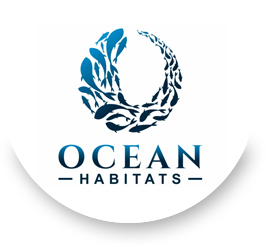SKA Launches Grand Canal Mini Reef Project
The waters that flow through Siesta Key’s Grand Canal may have a new lease on life thanks to a pilot “mini reef” project that the Siesta Key Association (SKA) has undertaken with a Florida based oceanographic non-profit organization called Ocean Habitats, Inc. Under consideration for more than a year, the project was given the green light at the SKA’s November, 2020 meeting and has been named the Siesta Key Grand Canal Regeneration Project.
The man-mad, heart shaped Grand Canal is a dead end canal with only one outlet into Roberts Bay. The SKA choseThe Grand Canal as a mini-reef test market because the quality of the water has declined greatly during its 95-year lifetime. In 2019, the Siesta Sand reported that a local expert told the SKA that “The Grand Canal is not happy,” at a meeting for the proposed project. “It wants to be a productive estuary,” he said. If the Canal’s water quality were to improve, he advised the group, “the canal could be come a healthful environment for blue crabs, snook and tarpon, which are popular catches for recreational fishermen in the area.”
The SKA reports that there are approximately 80 homes with docks or piers on the Grand Canal that are in the pilot program. The first phase of the project is focusing on the north side of the Grand Canal, near the entrance to Roberts Bay. SKA organizers have set an initial goal of 10 properties for the launch phase of the test project.
Last month, SKA volunteers began contacting Grand Canal homeowners whose properties have docks, piers, or sea walls. Interested residents will be able to visit the SKA website and purchase a mini reef for their property at a cost of $300 per unit directly from Ocean Habitat.
The project is being spearheaded by SKA board member Jean Cannon, and Phil Chiocchio, Sub Committee Chairman of the Sarasota Bay Fisheries Forum. Chiocchio has produced hundreds of scientific videos and served as a program content creator for the University of Florida’s Center for Aquatic and Invasive Plants.
***Once the homeowner purchases the mini-reef, they are asked to grant one-time permission for Ocean Habitat technicians to access the docks, pier or seawall by land for the installation. Using ropes or cables, they attach the multi-layered polypropylene mini reef devices that are connected together by cords and PVC tubes. Water flows through the multiple layers and wildlife soon attach to the reef as fish are attracted to the new food source. “When the reef is full,” Ocean Habitats founder David Wolff told Chiocchio in a video interview, “they can weigh up to 200 lbs.” On-going maintenance of the reef takes place by water.
Each reef is installed under the water and is “approximately 3’x2’x2′ in size and does float at the surface even after development,” Ocean Habitat’s website reports. “It floats so the filter feeders attached to the unit will always be where 90% of their food source is found within 24″ of the water surface.”
Tested for durability, the reefs have been shown to have a 500 year lifespan and filter 30,000 gallons of water per day. Once established, scientists report that the reefs will support some 300 fish and 200 crabs per year.
Research findings show that the mini reefs will create increased levels of dissolved oxygen,and improve the growth of grass habitat. This natural filter increases nutrients and an improved natural environment for sea creatures. In a short period of time, Blue Crabs, Stone Crabs, sponges, a variety of fish including mangrove snappers, and juvenile red fish, make the reef their home. Months later, oysters will appear . “A food chain grows up around the dock,” said Cannon. She noted that the reefs are not permanent and may be removed at the owner’s request. “We also want everyone to know that no is physical access to the homeowners property is required either at the time of installation or in the future.” The mini-reefs, she said, remain the property of the homeowner. No permits are required for installation.
Future plans call for the creation of a SKA Grand Canal Regeneration Project website where the community can see video footage of the changes taking place in the waters and the growth of new sea life. Educational community stewardship programs for the community and students also lie ahead.
“What our unit does is replicate nursery habitat, something more like mangrove trees,” Wolff told the Sarasota Herald Tribune. “We’re trying to grow baby shrimp, crabs and fish.”
Similar mini-reef projects are also seeing success in the waters of Anna Maria Island, Longboat Key and in Sarasota’s Ken Thompson Park. A Mote Marine mini-reef project is also underway in Boca Grande.


